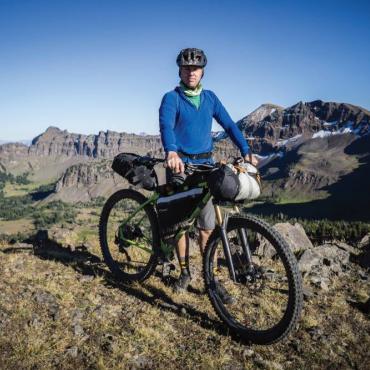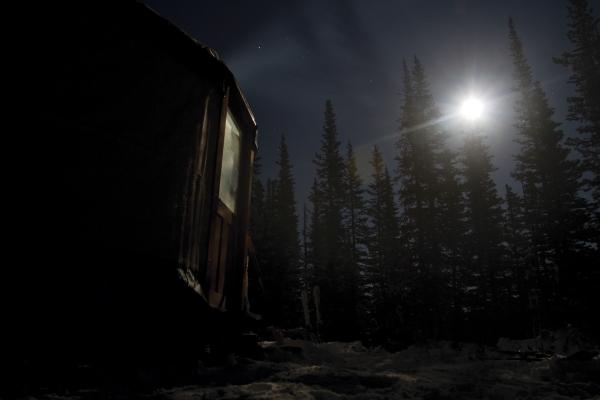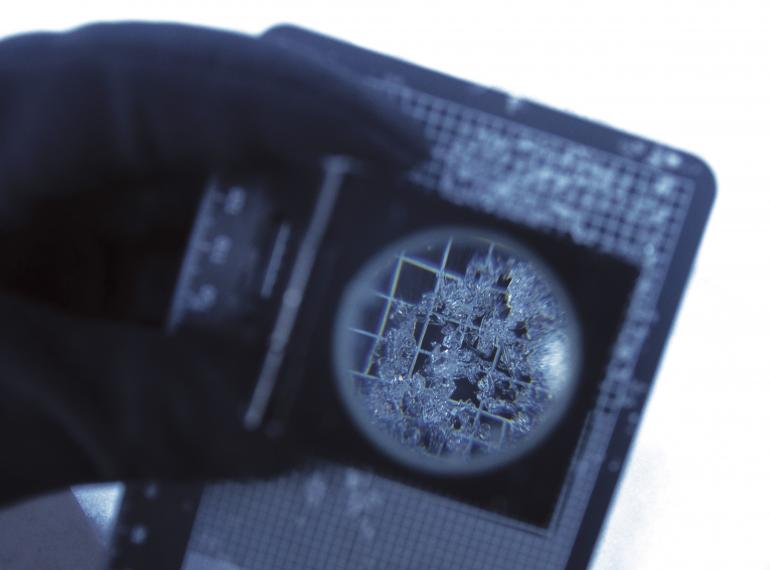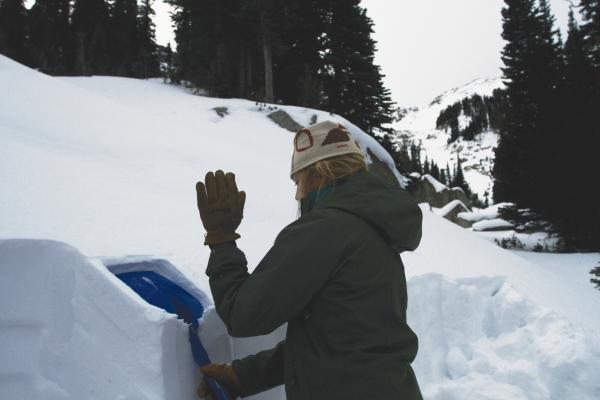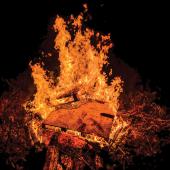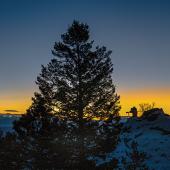Avy Savvy
The full moon arched above us in the cold night sky, brightening the surrounding hillsides. As we peered into the shelter, shadows danced through the windows and lively chatter leaked out into the frozen landscape beyond the fabric walls of the yurt.
The stove crackled and sleeping bags beckoned, but we had one more lesson before calling it a night. On our three-day Avalanche Level 1 course at the Bell Lake Yurt, the mountains were our school and the yurt was our classroom. We were there to learn—and comfort came second.
A level-1 course is basically an avy-science overview, providing general things to consider when traveling in avalanche terrain. Before the weekend was over, we’d cover weather, terrain, snowpack, rescue, route-finding, and human factors—all pieces of a much larger puzzle that ultimately lead to making informed decisions when traveling in avalanche terrain.
Days earlier, we’d met up with our instructor, Angela, at the Town Haul Diner in Harrison. We talked over avalanche-awareness basics before driving to the Bell Lake trailhead. Once there, we were put right to work with our avalanche beacons—the goal was to become proficient enough to quickly locate another beacon in a single- or multiple-burial situation. The instructors wanted to ensure that we all knew how to properly use our gear before setting off—an important first step for any group heading into the backcountry.
Strapping on our skins, we began the long ascent to the yurt. It’s a beautiful shelter, situated at 8,500 feet just below Bell Lake. With an assortment of couloirs, bowls, ridgelines, and glades, the area hosts any kind of terrain that you might want to ski—all well within reach.
The snowpack was unseasonably low, which was fine—at least there wouldn’t be any temptation. There were a few layers from early-season snow and weather events that presented plenty of opportunity to learn. After reaching the yurt and dropping off gear, we took an afternoon skin up to the lake to examine the snowpack. We descended back to the yurt under orange skies and a nearly full moon.
On day two, the group woke to a tasty breakfast prepared by Justin, the yurt keeper. Our bellies full, we went outside to work on probing techniques before heading up the trail for more situational beacon practices. Teams of two went through various scenarios where one or more people are buried. We worked our way down through a gladed area—the designated “debris pile”—until we found a signal; then we’d pinpoint its location and begin probing and digging. It was excellent practice, as these types of scenarios most closely replicate a real avalanche situation.
Next we moved out across the lake to work on route-finding. Everyone took a turn leading, learning the best ways to avoid avalanche traps while ascending different types of terrain. Farther up the slope, we dug into the snow to examine the layers and their stability. We found faceting near the ground, which produced low-quality shears at high force. A low-quality shear means the snow doesn’t break cleanly and has no energy. The result is a generally strong snowpack that has the potential to collapse—especially if additional snowfall adds more weight. Ground-level faceting would likely be around for much of the season and it wouldn’t take much to activate that layer.
Then came our daily classroom session, where each day we discussed additional information not covered in the field: the effects of weather changes on snowpack, human factors such as decision-making, and the esoteric minutia of snow science: crystal sizes and shapes, how they bond, and more.
On the last day, we traveled above the lake and split up into groups to examine the snowpack for ourselves. We made our own decisions and conclusions while Angela answered questions. This type of practice—learning to operate on one’s own—is crucial for safe, responsible backcountry travel.
Even with expert knowledge, avalanche forecasting is not an exact science. We know a lot about snowpack—but sometimes, there’s not a simple, right-or-wrong answer. For the bulk of the season, conditions are in the zone where staying or going is a fuzzy line. Everything we learned is just another piece of a much larger puzzle—pieces used to ultimately make the most informed decision about when to ski or when to head back to the car safely.
At the end of the last day, we packed up our gear and left the yurt one final time—a remarkable backcountry destination and a unique place to spend a weekend learning. Taking one last look around, we pointed our skis downhill and headed back to the trailhead. Back at our cars, we had a beer to celebrate before heading to Norris for a soak—the perfect end to a cold-weather backcountry trip in the Tobacco Roots.
For more information on avalanche courses through Montana Backcountry Adventures, visit skimba.com. For avalanche information and conditions, visit mtavalanche.com.


